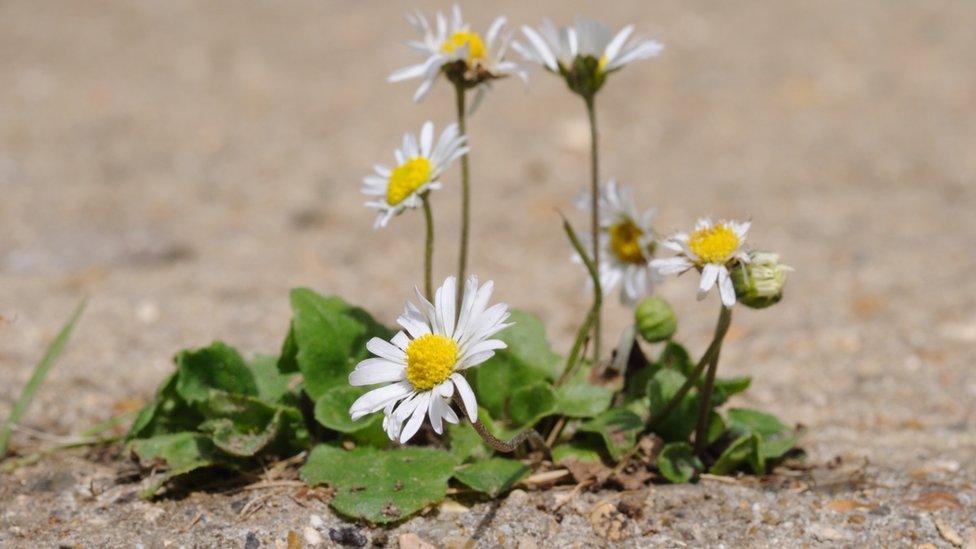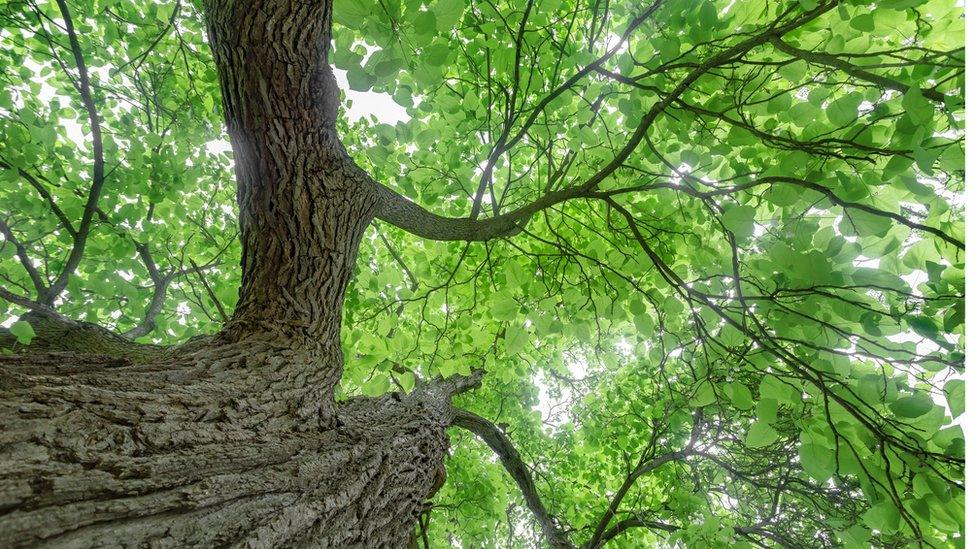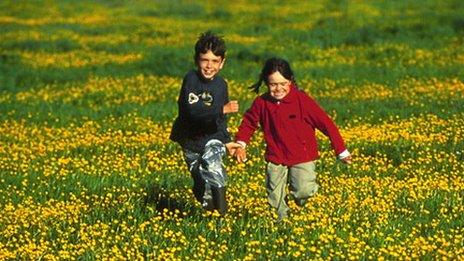All you need to know about nature deficit disorder
- Published

Even a flower in a crack in the paving can lift spirits
It's tough to connect with nature at this time of year.
Your days are spent under artificial lights in an office, while the last of autumn's blooms are hidden beneath piles of decaying leaves.
NDD, or nature deficit disorder, has become a buzzword of late.
Although it's not a recognised medical condition, concerns about its effects on wellbeing are attracting widespread attention.
"I guess it's a symptom of current lifestyle," says Dr Ross Cameron of the department of landscape at Sheffield University.
"We're so clued into modern technology and things that we're less observant about the world around us and we're more likely to learn about wildlife ironically from a David Attenborough programme than maybe from a walk in the woods."
Richard Louv coined the phrase Nature Deficit Disorder in his 2005 book Last Child in the Woods.
He argues that all of us, especially children, are spending more time indoors, which makes us feel alienated from nature and perhaps more vulnerable to negative moods or reduced attention span.
Dr Cameron gave his views on the subject in a lecture at the Royal Horticultural Society this month.
"[The phrase NDD] has been used as a bit of a coverall to describe the thing of where we used to have natural processes, natural experiences in our life, and that seems to be becoming less common," he told the BBC.

Ways to bring nature back into your life
Any green environment - from pot plants to weeds - can provide green space that attracts wildlife and exposes people to the benefits of the natural world.
Some green spaces are better than others - for example, small-leaved conifers such as the Scots pine and Junipers are good at capturing pollutant particles.
Fast-growing trees such as the Paulownia and Catalpa can lock up excess soil nitrates.
Source: Royal Horticultural Society

There's "another throwaway term, which is 'nature knowledge deficit', where we don't understand as much about the natural environment as we used to, he explains.
And if we don't experience natural places or "tinker around in the garden", this can be bad for our mental health.
"As biological beings we are physiologically adapted to be in certain environments - to run, to play, to hunt, to be active basically," says Dr Cameron.
"The reality is we tend to have the lifestyle of a brick at the minute. We tend to sit for most of the day - we tend to be very sedentary."

Trees like Catalpa have environmental benefits
His job is to think about how green spaces can be integrated into landscapes. So, could this be part of the solution?
"I've not sure I've got a cure," he laughs. "Landscape is obviously a very open-ended and undefined term.
"But basically any interaction with nature/green space seems to have some potential. I would argue that as you increase the scale and quality of it, the benefits also increase."
But he says even small and simple connections with nature can "give people a buzz", be it a robin at the front door or sitting in the garden watching a butterfly.
"We're quite interested to understand what those little positive effects have - those little things you notice in nature," he explains.
"You don't necessarily need to go to the Rockies or go to see blue whales off the Azores or anything like that.
"It's trying to see how much of these everyday things people notice, recognise and get a positive emotional response from."
Follow Helen on Twitter., external
- Published30 March 2012
